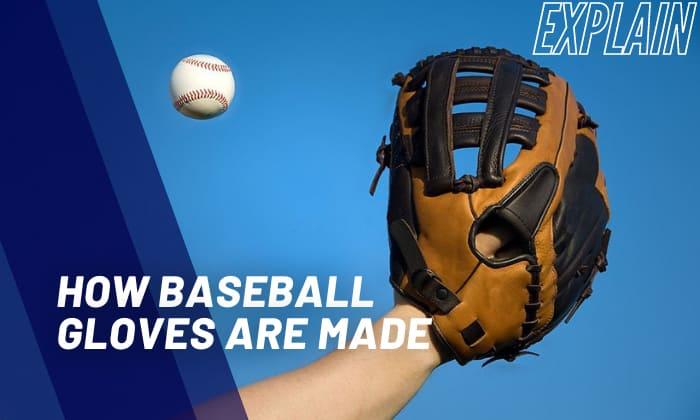
Baseball glove production is time-consuming due to the lengthy process of selecting materials and more in between until the final stage of fine-tuning. Nokona, an American baseball equipment maker, claims that making one glove requires 40 separate labor operations and approximately 4 hours.
You are viewing: How Are Baseball Gloves Made
Besides, how baseball gloves are made can differ in the specifics among manufacturers. That being said, we can demonstrate the general procedure for making a baseball glove so you may visualize the labor, technology, and skill required to produce high-quality gloves, particularly those for professionals.
How to Make Baseball Gloves
Input
Before the manufacturing process, factories need material supplies, which vary due to the multiple levels of quality, durability, comfort, and designs for specific baseball positions.
These are the main raw materials required for the production:
The most crucial aspect is to select the appropriate leather to ensure that the baseball gloves have suitable qualities for the sports. Despite numerous attempts with various types of synthetic fabric, cowhide leather remains the most common and highest-quality material for baseball gloves.
Cowhide leather can be processed via tanning to make resilient and flexible baseball gloves. To make leather, most manufacturers, like Rawlings, tanned natural cowhide to ensure it is not dry and cracked when manufactured and used later.
Manufacturing process
Baseball glove manufacturers mostly follow the same process, the differences can lie in their chosen materials, technologies, and unique steps that make their baseball brands stand out.
1. Die-cutting parts of a baseball glove
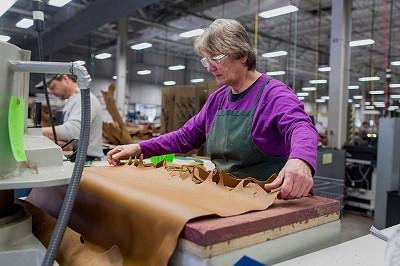
For certain manufacturers, the letters or brand logos are burned into the leather before cutting.
For most, die-cutting is the initial step in the production of baseball gloves. After returning from tanneries, the whole cowhide is now ready to be sliced into various-shaped sections.
There are four parts cut from the cowhide, including the glove pad, webbing, shell, and the lining. For your information, die-cutting is often operated automatically with clickers. However, some brands, like Wilson, may opt for hand-operated machines.
2. Shelling and lining the glove
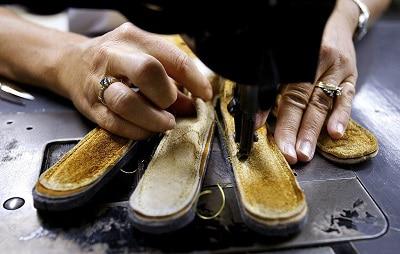
After the glove shell is cut from the cowhide, the section will be sewn to form a curved shell that is specific to each baseball position’s specifications. One notable fact is, shelling will be done when the glove is inside out.
Read more : How Do People Downhill Without Gloves On
The lining process follows, with workers inserting the liners from the right side of the gloves to bind the entire glove together.
After shelling and lining, there are two more important steps:
3. Adding the paddings and plastic reinforcements
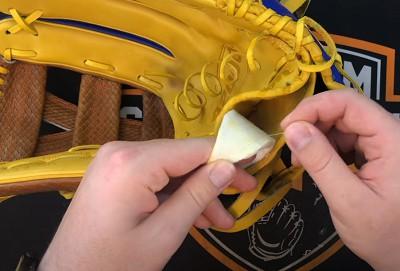
Padding the glove heel is vital for baseball gloves because it supports your palm and heel, preventing the fast-moving ball from injuring your hands. The cushioning for most player positions can be one or two parts made of leather.
Catchers’ gloves should contain as many as five layers of padding. Third basemen and first basemen also require gloves with extra paddings.
Plastic reinforcements are also inserted in all baseball gloves, as they are necessary to prevent the gloves from bending backward against strong forces. In other words, these plastic pads are added to protect the players’ fingers.
4. Sewing the webbing
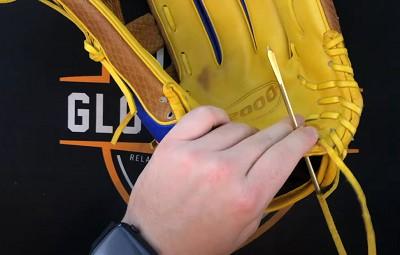
Baseball gloves also differ greatly in terms of their webbing due to the required functions of specific players on the field. Here’re the common glove webbing designs:
Based on the webbing designs given above, 2 – 6 lines of leather are used to produce the webbing. The web is then laced to the glove pieces.
5. Stitching and lacing the gloves
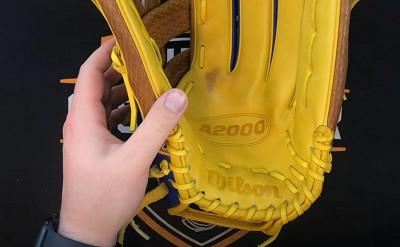
Stitching and lacing the gloves will finally bind the whole piece together into a complete product.
Lacing is done with an 80 to 90-inch long rawhide, and sewing is done with nylon thread to create tight and sturdy gloves that can endure powerful force and abuse of the game.
Below are the common order in lacing and stitching the gloves parts:
The hot-hand machine is used again in this stage, as the glove needs further adjustment to its correct sizes after sewing and lacing.
Output
Read more : How To Clean Bicycle Gloves
Every glove must go through quality control to ensure they meet all criteria before being released to the market. However, it will be done in each manufacturing step through quality control.
Here’re some of the critical quality control steps for manufacturing baseball gloves:
Frequently Asked Questions
How long does it take to build a baseball glove?
Normally, it takes around 4 hours to create a baseball glove. This is true to the American-made products from Nokona.
Where are baseball gloves made?
Baseball gloves are actually made all around the world, and not just in America, even for US-based companies such as Rawlings or Wilson.
In fact, you can find Rawling factories in Indonesia, China, Thailand, and the Philippines. Wilson baseball gloves, on the other hand, are made in Vietnam, Japan, and more. Some of their customized/handmade baseball gloves are still made in America.
Notably, brands such as Nokona and Glovesmith still make their products in the US.
Read more: Where are Wilson baseball gloves made?
Can you build your own baseball gloves?
Without a budget to buy baseball gloves or simply want to enjoy a DIY project, you can actually make your baseball gloves out of cardboard, just like the baseball legend Mariano Rivera did.
But, it seems unnecessary to go through the complicated process for a homemade baseball glove when a good product can start as low as $16.
What are Wilson custom glove steps?
When getting into the Wilson Custom Baseball Gloves website via https://www.wilson.com/custom/gloves/, you can choose your own baseball gloves pattern or position to make your personalized design.
Then, you will be able to pick the size and models available with varying colors and other options.
Conclusion
After checking out our article, hopefully, you now know what are baseball gloves made of and how baseball gloves are made. The process is indeed complicated, requiring incredible attention to detail and quality.
With the development of technology and outsourcing, the glove price is reduced enough for many to enjoy good-quality baseball gloves.
Source: https://t-tees.com
Category: HOW
